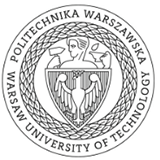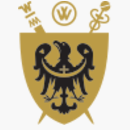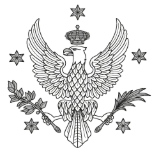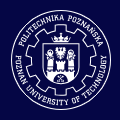Introduction
The University of Warmia and Mazury in Olsztyn is located in Olsztyn, Poland. It is a comprehensive public university. Its main campus is known as one of the most beautiful campuses in Poland.
Overview
Number of students: about 27,000.
Number of faculty and staff: 3,035 administrative staff.
History and establishment time
The school was established on September 1, 1999 by the merger of the former Agricultural Institute of Technology, the Normal University and the Warmian Mazury Seminary. In August of the same year, Polish President Alexander Kwaśniewski and Minister of Education Miroslaw Handke signed a new parliamentary statute to establish its university status. The first academic year began in October 1999.
School Strength
Faculty: The school has a highly qualified faculty team to provide students with high-quality education and guidance. Many teachers have rich teaching and scientific research experience in their respective fields.
Scientific research results: In-depth research has been carried out in multiple disciplines, and a series of influential scientific research results have been achieved. Actively participate in scientific research cooperation projects at home and abroad, and promote the development and innovation of disciplines.
International cooperation: Joined international exchange programs such as Socrates-Erasmus, established cooperative relations with many foreign universities, carried out teacher-student exchange, scientific research cooperation and other activities, provided students with broad international exchange opportunities, and enhanced the school's international influence.
Institutional nature
Public university.
Educational philosophy
Focus on cultivating students' comprehensive literacy and practical ability, and is committed to combining academic education with practical application, so that students can better adapt to the needs of social development. At the same time, it emphasizes the interdisciplinary education model, encourages students to explore and innovate between different disciplines, and cultivates professionals with innovative thinking and global vision.
Key laboratories and disciplines
Key laboratories: Although there are no clearly public key laboratories, the school is equipped with relatively advanced scientific research facilities and equipment to meet the research needs of different disciplines.
Key disciplines: covering animal bioengineering, biology and biotechnology, environmental management and agriculture, mathematics and computer science, humanities, law and administration, health sciences, social sciences, technical sciences and other disciplines, some of which have a high academic status and influence in Poland.
Faculty
The school has 16 colleges, including the College of Animal Bioengineering, the College of Fine Arts, the College of Biology and Biotechnology, the College of Economic Sciences, the College of Environmental Management and Agriculture, the College of Environmental Sciences, the College of Food Sciences, the College of Geological Engineering, the College of Humanities, the College of Law and Administration, the College of Mathematics and Computer Science, the College of Medicine, the College of Social Sciences, the College of Technical Sciences, the College of Theology, the College of Veterinary Medicine, etc.
Ranking
In the QS Emerging Europe and Central Asia ranking, the school ranks 104th (2022).
Expenses
Tuition fees for different majors vary, and the specific fees are as follows:
Undergraduate: Humanities and social sciences majors are about 2000-2500 euros/year, science and engineering majors are about 2500-3000 euros/year, and medical majors are about 3500-4000 euros/year. Years.
Master: Humanities and social sciences majors are about 2500-3000 euros/year, science and engineering majors are about 3000-3500 euros/year, and medical majors are about 4000-4500 euros/year.
Campus
Location: Located in Olsztyn in northeastern Poland, the city is the capital of the Warmia-Masuria Province. The surrounding natural environment is beautiful, with many lakes and forests, providing students with a good learning and living environment.
Campus environment: The main campus is considered one of the most beautiful campuses in Poland. The campus is shaded by trees and surrounded by lakes. The unique architectural style combines historical and modern elements to create a strong academic atmosphere and cultural atmosphere.
Campus facilities: It has modern teaching facilities and scientific research equipment, including laboratories, libraries, computer centers, gymnasiums, etc., which provide convenient conditions for students' study, scientific research and entertainment. The university library is an important part of the school. Its collection is a combination of libraries from partner schools, including the seminary library dating back to the 16th century. The library building is a new "smart" building equipped with advanced management systems, air conditioning equipment, and convenient access for people with disabilities.
-

Warsaw University of Technology
-

Poznan University of Life Sciences
-

Wroclaw Medical University
-

Nicolaus Copernicus University
-

University of Warsaw
-

AGH University of Science and Technology
-

Silesian University of Technology
-

Poznan University of Technology
-

Jagiellonian University
-

Adam Mickiewicz University
-

Mesoamerican University
-

Istmo University
-

Mariano Galvez University of Guatemala
-

Regional University of Guatemala
-

Galileo University
-

Francisco Marroquín University
-

Rafael Landívar University
-

University of the Valley of Guatemala
-

University of San Carlos of Guatemala
-

Technological Institute of Tlaxcala Plateau
-

Golfo University
-

Technological University of South Sonora
-

Technological University of Huejotzingo
-

Tizimín Institute of Technology
-

Chilpancingo Institute of Technology

